Seven DAYS OMO VALLEY TRIBES
Green Utopia Tour
Seven Days Trip
-
Visiting Historical places, monuments, museums.
-
Exploring cultural life with excellent art galleries, traditional restaurants and live music venues.
-
Enjoying panoramic views, scenic land escapes
-
Tasting Ethiopian’s food
-
Offer good evening lively Night life Entertainment
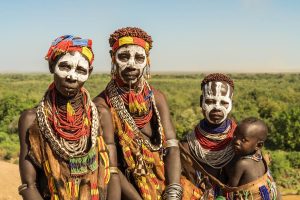

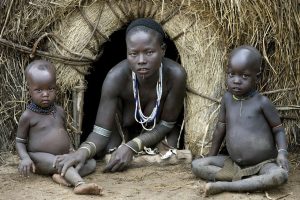
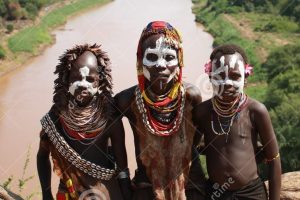


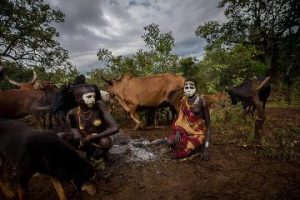

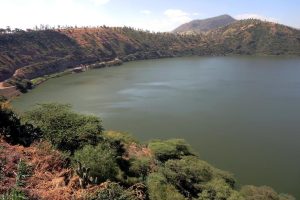
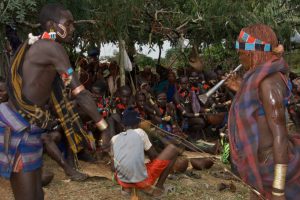
Days | Trip Description |
| |||
Day 01 – Arrival in Addis Ababa | Welcome to Addis Ababa. Addis Ababa Ethiopia‘s capital city means “a new flower”, located in the center of the country, 2100- 2300m above the sea. It is one of the highest-located capital cities in the world. In Addis; • Visiting Historical places, monuments, museums. On your arrival at Addis Ababa Bole International Airport, after clearing immigration and customs welcome by Green Utopia staff and get transferred to your hotel. The rest of the day relaxing at your hotel or sightseeing of Addis Ababa. A guided tour in Addis Ababa can combine, A visit of the National Archaeological Museum, the most important museums in sub- Sahara Africa. It housed the 3.5 million-year-old bones of Lucy. The Holy Trinity Cathedral, built in 1945, this cathedral is renowned for its stunning stain-glassed windows which depict scenes from the Old and New Testament of the Holy Bible. And Merkato, the largest open Market in Africa where you will find a wide range of commodities on sale (close in Sundays). Based on time availability – Other Activities to be add Go shopping: exploring Markets & shopping Malls. Conducting Social activities: Visit of Ketchene Women’s pottery association, Visit Former Women’s Fuel Wood Carriers Association, Visit of Hamlin Fistula Ethiopia, Selamta Family project. Galleries in Addis: St. George or Addis Fine Art Gallery represents emerging and established international with a focus on contemporary art from the Horn of Africa and its diaspora. |
| |||
Day 02– Flight Addis Ababa to Jinka | Jinka Visit Jinka Museum research center in the South Omo Research Centre to learn more about the ethnic groups of the Southern Ethiopia. And also, the village to the Ari people. The villagers will show you how they make liquor out of Sorghum, garlic and maize. Market visit if the days meet with the market days of the Omo Valley. |
| |||
Day 03 – Drive Jinka – Mursi -Jinka – Turmi, 270kms/5hrs | Jinka- Mursi – Jinka – Turmi Leave for one of Africa’s vast wildernesses, Mago National Park. Mago was founded in the 1960s and it encloses dense acacia forests and open savanna and provides sanctuary to nearly one hundred mammal species and three hundred bird species, though population densities are sparse these days. Visit the Mursi village, 140kms round trip. They are known for fierce warrior disposition and wildly decorative appearance, with large circular clay labrets that the women wear in the lower lip. The larger the lip plate, the greater the woman’s value when she is married. She removes her plate for eating and sleeping. Mursi has become a cultural symbol of the Lower Omo Valley. They are the most renowned of the Omotic – speakers, famed for their practice of inserting large clay plates behind the lower lips of their women and colourful dresses and also they go in for body scarification. The Benna village are on your way to Turmi. They are adorned with clay and an impressive headdress. Turmi is a place for the Hamer tribes. Visit the Hamer village they are a fine looking people, both men and women take great pride in their appearance, shaving and coloring their hair, oiling their bodies and decorating themselves with beads and bracelets worn around arms and legs. They are famous for their body decoration, moonlight dance (Evangedi Dance) and bull-jumping. Bull jumping marks the rite of passage from childhood to adulthood. It is not a done every day. The Hamer villages are incredibly neat and constructed entirely from mud, wood and thatch; one of the most striking aspects of these small villages –which typically consist of a few extended families across perhaps 10-15huts –is the total absence of non –organic or western artifacts. Market visit if the days meet with the market days of the Omo Valley. |
| |||
Day 04 – Drive Turmi to Karo, 80kms/2.3hrs | Turmi – Karo – Dimeka – Turmi Drive to the village of Kolcho and visit the Karo tribes. They are considered the masters of body painting, in which they engage when preparing for a dance, feast or celebration. If today is Tuesday or Saturday visit Dimeka women’s market. The other beautiful South Omo tribes Market held on Tuesdays & Saturdays. Here you could meet no less than four different tribes at a time, namely the Bennas, the Hamer, Erbore & Ari tribes. |
| |||
Day 05 –
Drive Turmi to Arba Minch, 280kms/5hrs | Turmi to Arba Minch via Erbore & Konso villages. Arbore / Erbore, is far more rustic and unaffected than many similarly size towns in south Omo, in common with their linguistically and culturally affiliated Tsemai neighbors, the Arbore migrated to their present homeland from Konso perhaps two centuries ago. Because they have ancestral and cultural links to Konso and the pastoralists of the surrounding lowlands, the Arbore traditionally played an important role as middlemen in trade between the Omo River and the Konso Highlands. The town of Arbore lies in an area where several tribal boundaries coverage. Proceed to Konso village. The Konso people are known for their characteristic intricately terraced hillsides, fine woven materials, and the carved totems with which they decorate their graves. Lunch in Konso Kanta Lodge & continues to Arba Minch and explore the city. Arba Minch (Forty Springs) derives its name from the innumerable little springs that bubbles up in the evergreen forest covering the flats below the town. It is the site of the only ground-water forest. Arba Minch is the largest town in Southern Ethiopia. The town lays at an elevation of around 1,300m in the foothills of the Rift valley wall, above a cliff overlooking the mountains sliver that separate the lakes of Chamo and Abaya. With mountains rising to almost 4000m to the west, it is difficult to think of a more perfectly suited town anywhere in east Africa. |
| |||
Day 06– Arba Minch | Dorze village & Lake Chamo boat trip Dorze village, the home of the Dorze people at Chencha. The Dorze are renowned cotton weavers whose tall beehive-shaped dwellings are among the most distinctive traditional structures to be seen anywhere in Africa. The main occupations of the region are subsistence farming and weaving. The Shama cloth produced around Chencha is regarded to be the finest in Ethiopia: Plain white Gabbi robes and brightly colored scarf-like Netalas are sold along the roadside. In the afternoon enjoy a boat trip on clear blue waters of Lake Chamo to see the crocodiles, hippos & aquatic bird species. The northern shores of Lake Chamo are famous for its large crocodiles, which can be seen in great numbers lounging in the heat. The lake is about 32km long and provides a lush wetland habitat for many species of flora and fauna. |
| |||
Day 07 – Flight Arba Minch to Addis Ababa | Addis Ababa& Departure Last minute shopping in Addis Ababa or relaxing at your hotel and transfer to your hotel for the day use. Visit to Entoto Hills – best introduction place to Addis Ababa. Mt. Entoto is the highest peak in Addis Ababa reaching 3,200 meters above sea level, giving the opportunity to catch stunning views over the city and the surrounding area from the summit. It is the first settlement in Addis Ababa where Emperor Menelik II resided and built his palace in 1887. It is a historical place which offers a unique glimpse into the history of Ethiopia’s distinct culture. The compound at the peak hosts the Entoto Mariam church, an Ethiopian artefact muse-um as well as Menelik II palace. In addition to its historical significance as one drive up the hill there is an appreciable drop in temperature and the air is filled with the scent of the Eucalyptus trees which line the road. On the way up the roadside stalls offers fresh Ethiopian coffee. Also, if you have an interest in Ethiopian traditional clothes stop by at Shero Meda Market. There is a wide variety of beautiful fabrics, shawls, scarves, dresses, tops and jewellery with lots of choice and really good for gift ideas. Tonight you will have a wonderful cultural evening at one of Addis Ababa Restaurant; Ethiopia is a mosaic of people with more than 80 languages, different lifestyles, costumes and cultural dances. Take a chance to experience some of these cultural dances and traditional meals with a drink of Tej, a type of wine made from Honey. |
| |||
DEPARTURE Hope you enjoyed your stay with us, Many thanks for coming & Have the safest flight. |
| ||||
Accommodation: | All accommodation on private facilities. |
Meals/Beverages: | Meals on Full board basis Breakfasts, Lunches & dinners with one soft drink or bottled water per meal per person are included. |
Transfers/Transport: | Airport welcome, assistance with luggage, and transportation by air-conditioned comfortable spacious vehicles, completed with bottled water. |
National Guide: | English speaking qualified national tour guides for the entire sightseeing. |
Sightseeing Fees: Local taxes Porterage fees | All entrance fees as per the program are included All necessary local Government taxes are included Porterage fees at the Airport and Hotels. |
BAGGAGE ALLOWANCE
Domestic Flights: | A strict luggage restriction of 20kgs per person and hand luggage, applies to all light aircraft flights within Ethiopia. It is important that you carry soft-sided or “barrel” bags, as hard-sided suitcases (Samsonite-style) cannot be fitted into the small holds of light aircraft if you use the charter flights on this program. |
Excess Baggage: | Excess baggage may be safely stored at hotel in Addis Ababa. |
Miscellaneous: | Visa for Ethiopia. |
Flight
Gratitude Meals | International & Domestic flights Internal (Domestic) Flights will be quoted separately on the flight section. Tipping Any other meals other than the above mentioned. |
Insurance: | Insurance coverage of personal loss, injury, illness or damages incurred during your trip. We strongly recommend travel /cancellation insurance. |
Personal expenses: | Items of a purely personal nature such as drinks (unless noted), laundry, dry cleaning, internet, fax, or telephone charges and transfers/sightseeing or meals not included in “Your itinerary includes”. |
Baggage allowance: | Excess baggage charge |
Inspirational Historical wonders of Southern Ethiopia.
Contact
- Bole Africa Ave Street.Saay Building 2nd floor
- +251-930-013435
- +251-911-233240
- P.O BOX: 43210 A.A Ethiopia
- marketing@greenutopiatour.com
- info@greenutopiatour.com
Useful Links
Tour Packages
©2023. Green Utopia. All Rights Reserved.
